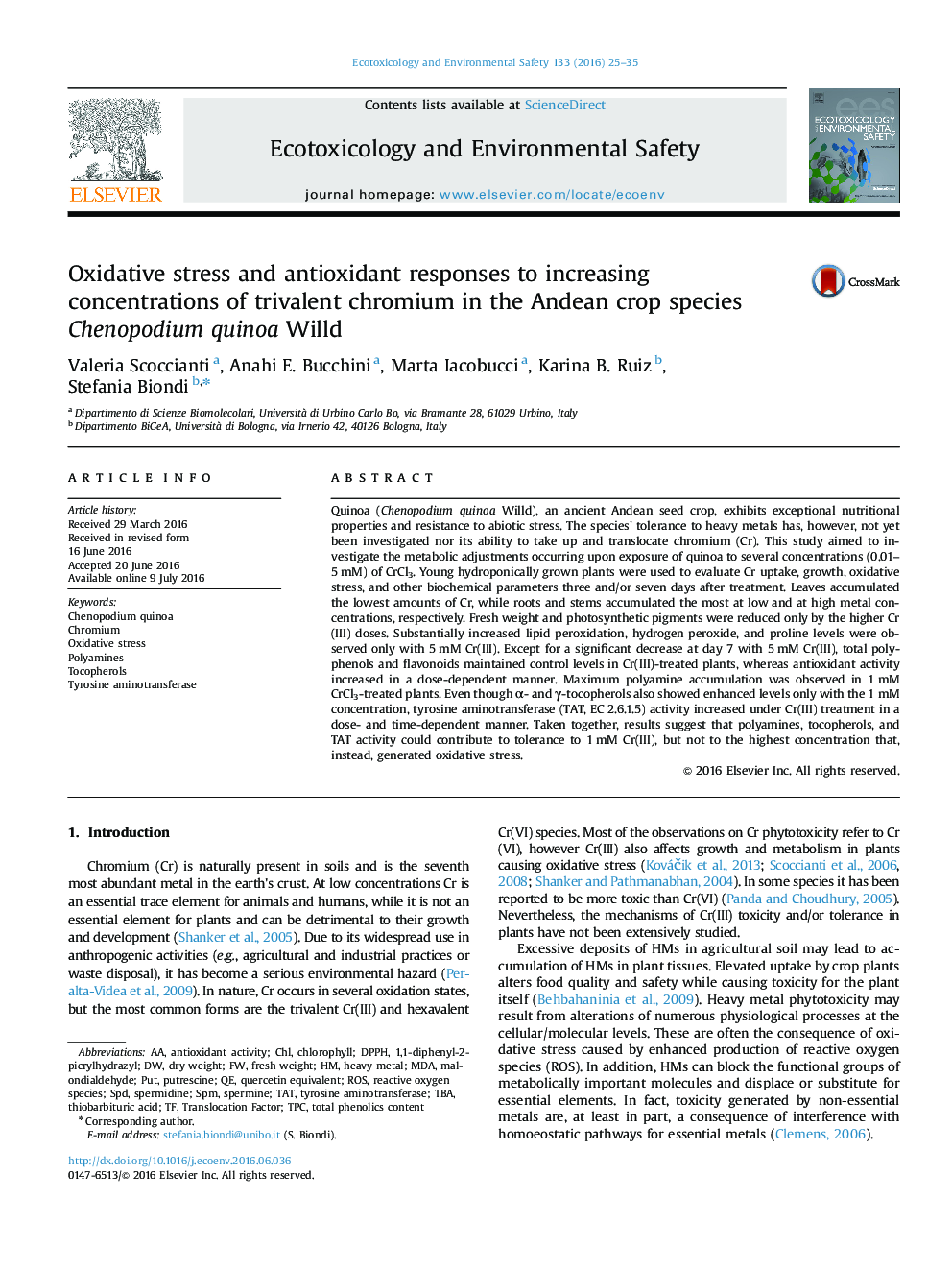| Article ID | Journal | Published Year | Pages | File Type |
|---|---|---|---|---|
| 4419045 | Ecotoxicology and Environmental Safety | 2016 | 11 Pages |
•Growth and metabolic responses of quinoa to varying doses of Cr(III) were assessed.•Cr accumulation and organ allocation was concentration-dependent.•The highest dose tested (5 mM) induced oxidative stress and proline accumulation.•Polyamines and tocopherols may contribute to antioxidant protection at 1 mM Cr(III).
Quinoa (Chenopodium quinoa Willd), an ancient Andean seed crop, exhibits exceptional nutritional properties and resistance to abiotic stress. The species' tolerance to heavy metals has, however, not yet been investigated nor its ability to take up and translocate chromium (Cr). This study aimed to investigate the metabolic adjustments occurring upon exposure of quinoa to several concentrations (0.01–5 mM) of CrCl3. Young hydroponically grown plants were used to evaluate Cr uptake, growth, oxidative stress, and other biochemical parameters three and/or seven days after treatment. Leaves accumulated the lowest amounts of Cr, while roots and stems accumulated the most at low and at high metal concentrations, respectively. Fresh weight and photosynthetic pigments were reduced only by the higher Cr(III) doses. Substantially increased lipid peroxidation, hydrogen peroxide, and proline levels were observed only with 5 mM Cr(III). Except for a significant decrease at day 7 with 5 mM Cr(III), total polyphenols and flavonoids maintained control levels in Cr(III)-treated plants, whereas antioxidant activity increased in a dose-dependent manner. Maximum polyamine accumulation was observed in 1 mM CrCl3-treated plants. Even though α- and γ-tocopherols also showed enhanced levels only with the 1 mM concentration, tyrosine aminotransferase (TAT, EC 2.6.1.5) activity increased under Cr(III) treatment in a dose- and time-dependent manner. Taken together, results suggest that polyamines, tocopherols, and TAT activity could contribute to tolerance to 1 mM Cr(III), but not to the highest concentration that, instead, generated oxidative stress.
Graphical AbstractFigure optionsDownload full-size imageDownload as PowerPoint slide
